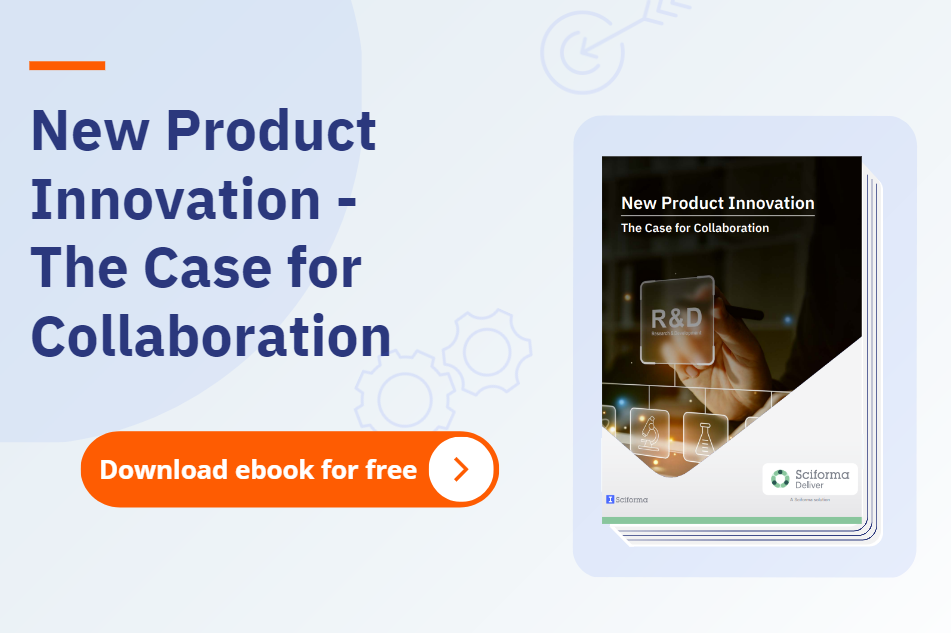- Home
- Blog Center
- What is Product Innovation in Business?
What is Product Innovation in Business?
“Product Innovation is the transformation of a market opportunity into a commercializable product”
Vish Krishnan and Karl Ulrich.
In a world of digitalization and hybridization, organizations must be prepared to transform to best meet their clients’ needs. One way to do so is through product innovation. Product innovation is both a challenge and an opportunity and is often associated with complex and critical processes. Because of this, it is important to consider why we continue to innovate, the associated risks, and the future for product innovation in our changing digital landscape.
Product innovation: a division of business innovation
Firstly, let’s specify what we mean by “product innovation.” Contrary to popular belief, innovation is not the same as new product development. According to Matt Banholzer, McKinsey’s Head of Global Innovation Delivery Work, innovation is broader: new services and experiences, new ways of meeting customer needs, new business models. Essentially, “anything that creates opportunities to generate value.“
So, how exactly do we define innovation within the company? There are five types of innovation, according to the Organization for Economic Cooperation and Development’s (OECD) Oslo Manual:
- process innovation
- marketing innovation,
- organizational innovation
- product innovation
- product and business process development
Digital transformation at the service of product innovation
Digital transformation has turned the world of innovation upside down: today consumer goods companies can indeed launch new products 50% faster, at a third of the cost and double their return on investment! New technologies have infused the entire enterprise, from marketing to production. Yet their potential is still not being fully exploited, despite the significant gains they could bring.
Moreover, there are many examples of companies that have successfully invested in digitalization. A considerable number of aspects of the innovation process can benefit from the use of digital tools or the contributions of advanced analysis. Companies that know how to seize on these new tools and implement digitalized innovation are ahead of their competitors and capture a high value on the market. For example:
Mercedes-Benz Group and the digitalization of its product development system
Our first example is Mercedes-Benz Group: the company has invested heavily in the digitalization of its entire product development system, from design to production to product development. As a result of this global digitization, the company’s innovation cycles have been significantly reduced and its automotive customization capabilities have improved, with assembly efficiency increasing by 25%.
GlaxoSmithKline and its use of new technologies
GlaxoSmithKline, a British pharmaceutical company, has invested on its side in artificial intelligence platforms for its consumer healthcare unit. These platforms generate demand forecasts for allergy- and flu-prone seasons, as well as eye-tracking technology to understand how shoppers look at their products, and sensory models to improve the consumer experience.
The challenges of product innovation
However, enthusiasm for product innovation does not always mean success, which remains an elusive challenge for companies. Indeed, the failure rate of product innovations is very high: the market analysis company Nielsen estimates that each year, on average, 30,000 consumer products are introduced on the American market. Of the tens of thousands of products, less than 0.1% contributed to the major revenue share of innovations in 2019. According to Harvard Business School professor Clayton Christensen, 95% of the 30,000 new product launches failed.
This failure rate is particularly high in the consumer goods sector. While other sectors do better, such as the pharmaceutical industry, the best in terms of product launches, the failure rate remains high across all industries. On average, McKinsey estimates the failure rate of new product launches at over 40%. The reason: the difficulty of seizing market opportunities. Less than 30% of the managers surveyed by McKinsey are confident in their ability to respond to market changes they see coming. Just as many feel that their organization is not equipped to seize these opportunities. In addition, less than 10% believe their company is equipped to generate net new growth.
Successful product innovation in business
In a 2017 article, McKinsey also revealed four key elements to ensure successful product innovation processes:
- collaboration between teams
- knowledge of the market
- rigorous planning
- development of the company’s talent
We could also add a fifth: being well equipped to simplify the life of teams, secure planning, ensure collaboration, and automate the processes that need to be automated.
Product management solutions for successful innovation
Solutions dedicated to R&D and Marketing departments exist to manage the innovation process, from development to the launch of new products. This is the case for Sciforma Deliver’s New Product Innovation (NPI) solution: teams can work in the same platform, with their own terminology, business tools, and collaborative tools like Microsoft Teams. In brief, the NPI solution has one objective: to accelerate companies’ Time-to-Market by securing the management of the Stage Gate process, optimizing resources, and accelerating project delivery.
To learn more about the Sciforma Deliver solution, contact us!






